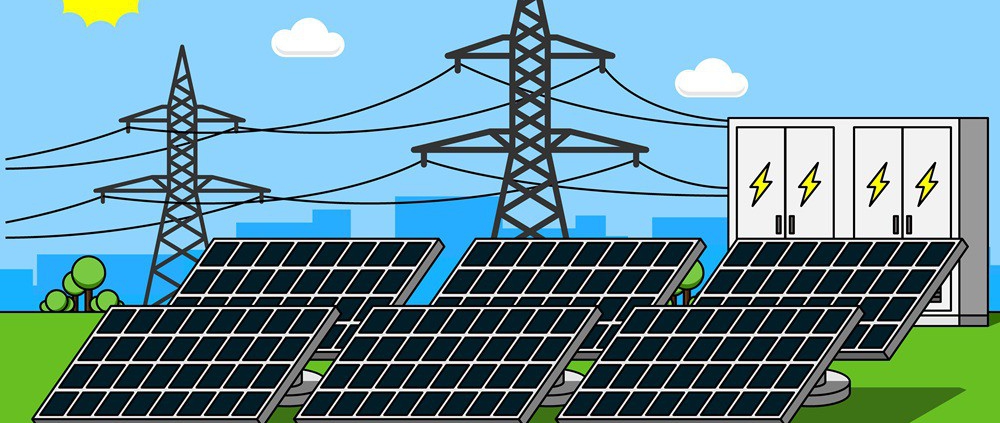Solar Battery Energy Storage Systems: What They Are, How They Work, and Why They Matter
Introduction
As solar power adoption continues to grow across homes, businesses, and utility-scale applications in the U.S., the role of energy storage has become increasingly essential. A solar battery energy storage system allows you to store the electricity generated by your solar panels and use it later when the sun isn’t shining. Whether you’re a homeowner aiming to increase energy independence, a business looking to manage demand charges, or a utility developer planning grid-scale projects, understanding how these systems work and what benefits they offer is crucial.
This article explains the basics of solar battery storage systems, the types available, and how to determine the right solution for your needs.
What Is a Solar Battery Energy Storage System?
A solar battery energy storage system (ESS) is a solution that stores excess solar electricity for later use. It typically consists of:
- Solar panels that generate electricity from sunlight
- Battery bank (usually lithium-ion or lead-acid)
- Inverter that converts DC to AC electricity
- Battery Management System (BMS) or controller for safe operation
There are three main configurations:
- Grid-tied: Remains connected to the utility grid and uses solar + storage primarily to offset electric bills.
- Off-grid: Operates independently without any connection to the grid.
- Hybrid: Connected to the grid but can function during outages with backup support.
How Does It Work?
Solar battery systems work by storing excess electricity generated during the day and releasing it when needed, such as at night or during outages. Here’s a simplified flow:
- Daytime: Solar panels power the home and charge the battery.
- Nighttime / Cloudy Days: The battery discharges stored power.
- Grid Interaction (Hybrid systems): When the battery is full, excess power can feed back to the grid.
- BMS: Regulates voltage, temperature, charging cycles, and overall battery safety.
Advanced systems can prioritize self-consumption, backup supply, or grid services depending on user goals.
Key Benefits of Solar + Storage
- Energy Independence: Rely less on the grid and avoid blackouts.
- Lower Bills: Shift usage from high-rate to low-rate times; avoid demand charges.
- Backup Power: Ensure your home or business stays powered during grid outages.
- Sustainability: Maximize renewable energy usage.
- Incentives: Federal tax credits (like the ITC), plus state-level rebates.
Battery Types Compared: Lead-Acid vs. Lithium-Ion
| Feature | Lead-Acid | Lithium-Ion |
| Cycle Life | 500–1,000 cycles | 3,000–10,000+ cycles |
| Depth of Discharge | 50% (typical) | 80–90% |
| Maintenance | High (water, vents) | Low/None |
| Efficiency | 70–80% | 90–95% |
| Upfront Cost | Lower | Higher |
| Total Lifetime Value | Lower | Higher |
Most modern systems use lithium-ion batteries due to their long lifespan, better performance, and minimal maintenance. You can also explore: 👉 Low vs High Voltage Home Energy Storage Systems: Pros, Cons & Applications
Residential vs Commercial Use Cases
Residential:
- Maximize self-consumption of solar power
- Backup power during outages
- Lower peak-hour energy costs
Commercial/Industrial:
- Manage demand charges
- Enhance power reliability
- Integrate solar with business operations
Applications vary by scale, but both segments benefit from energy cost control and increased resilience.
System Sizing: How Much Storage Do You Really Need?
Sizing a system depends on your energy usage and backup needs. Key considerations:
- Daily consumption (kWh)
- Desired backup duration (hours or days)
- Available solar generation
Examples:
- A small home might need a 5–10 kWh system.
- A farm or business could require 30–50+ kWh.
Professional installers can perform a detailed load analysis for accurate sizing.
Design & Installation Considerations
- Location: Indoor vs. outdoor (weatherproofing, ventilation)
- Voltage architecture: Low voltage vs. high voltage
- Compatibility: Inverter and solar system integration
- Compliance: UL 9540 certification and local codes
Learn more about system architecture and voltage differences here: 👉 Low vs High Voltage Home Energy Storage Systems
Cost, Incentives & Payback Period
- Cost: Residential systems typically range from $8,000 to $20,000+ depending on capacity
- Incentives: U.S. federal ITC (30% credit) + state/local programs
- Payback: 5 to 10 years for most households, faster in high-rate utility regions
Commercial projects often qualify for accelerated depreciation and custom rebates.
Future Trends: From Home to Grid
Solar battery storage isn’t just for homeowners. Large-scale installations are now essential for grid reliability and renewable energy balancing.
Utility developers and energy companies are deploying ESS for:
- Frequency regulation
- Peak shaving
- Grid resiliency and microgrids
Explore more in this article: 👉 Grid Energy Storage Systems: How Utilities and Developers Are Building the Future of Power
Conclusion & What’s Next
A solar battery energy storage system can offer immediate and long-term value for both residential and commercial users. With the right design and installation, it helps reduce utility bills, provide backup power, and increase your use of renewable energy.
If you’re considering solar storage, start by:
- Assessing your energy goals and usage
- Comparing battery types and system sizes
- Consulting with a qualified installer or supplier
As solar adoption grows, energy storage is no longer optional—it’s the smart next step.


